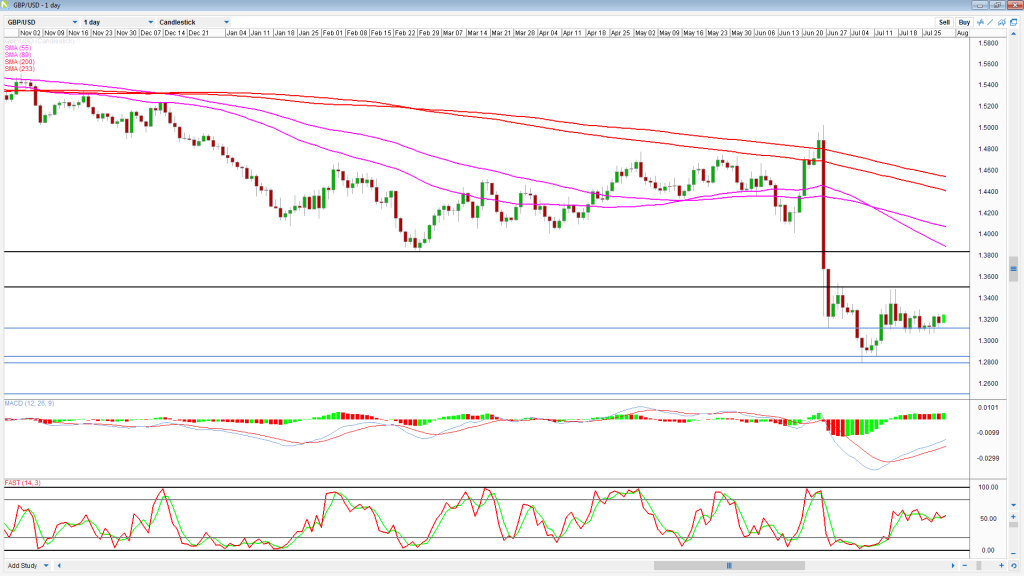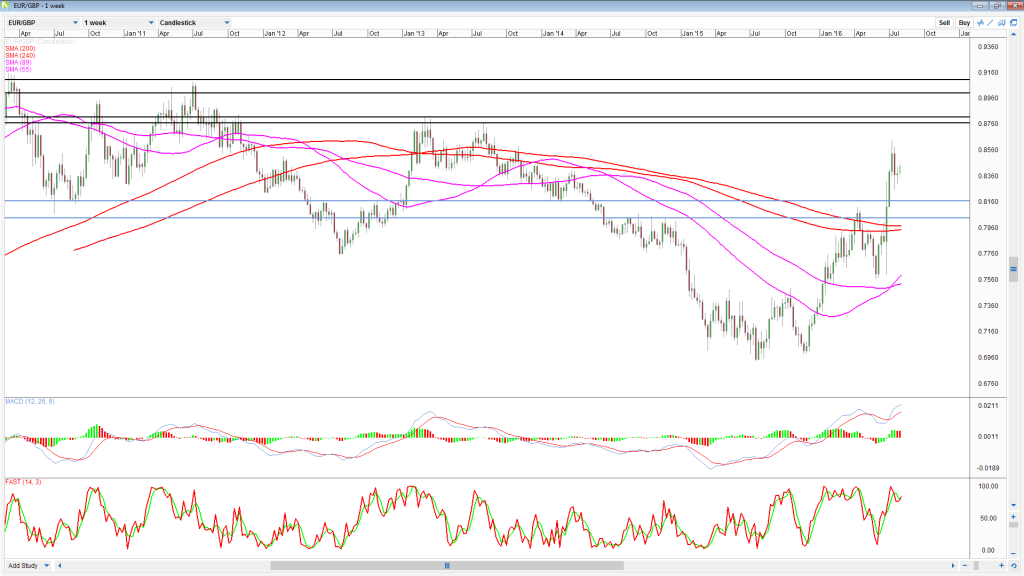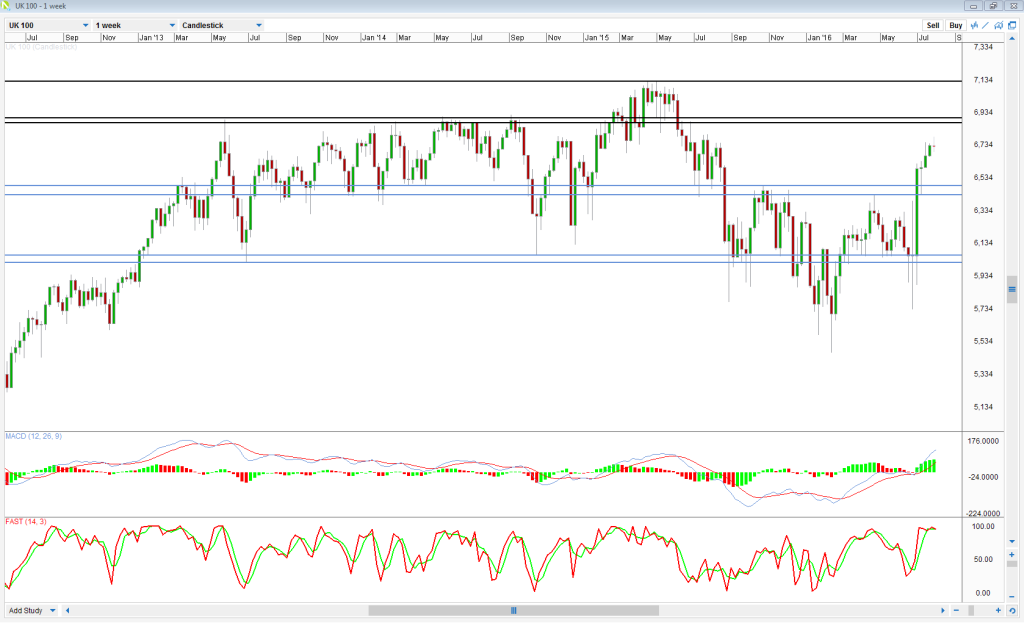What’s happened since the Brexit vote?
The month following the surprise vote by the U.K. to leave the European Union has been an eventful one and yet, the world has not quite come to an end, well not yet anyway.
The resignation of David Cameron and the leadership contest that followed was swift and quickly brought some political stability back to the U.K. at a time when stability of any kind was appreciated. Theresa May wasted no time in assembling a new cabinet tasked with fighting a battle on two fronts, domestically and abroad.
The battle at home is one of damage control, managing any economic repercussions in the coming years as a direct result of Brexit. This likely means reassuring companies that the U.K. remains the place to do business and a deal will be reached to safeguard that. It will also likely mean doing something the Conservative government refused to do under the last regime, loosening the purse strings in an attempt to avoid a Brexit-driven recession and reassure the public that the U.K. is well positioned to cope with any shocks that Brexit could bring.
The battle abroad is likely to be much tougher. In Europe, May needs to go on the charm offensive while at the same time strongly protecting both Britain’s interests and the desire of the British public. At the same time, more than 50 trade deals will need to be negotiated to replace those that the E.U. currently has, as well as any others that the U.K. wishes to pursue. This is no mean feat for a country that has no experience of negotiating them.
There has been a surprising amount of calm in the markets since the vote on 23 June, with equities in particular performing remarkably well. The FTSE and its U.S. counterparts are all trading well above the levels on the day of the referendum, while in Europe, indices are trading at or a little below these levels. Not bad considering the sell-off that initially followed the decision.
In the currency markets, the pound and the euro have not fared so well. The pound is trading not far off its more-than–30-year lows, down more than 11% from the close on 23 June, while the single currency has pared around half its initial sharp losses but remains down around 2%. By comparison this is small but that’s to be expected given that the vote affected the U.K. disproportionately more.
What happens next?
The next step in the process is the triggering of article 50 by the U.K. government – this may or may not require parliamentary approval, it’s not quite clear yet – which would officially start the two-year process of taking the U.K. out of the E.U. and establishing what the new relationship will be. This is an extremely complex process, the unwinding of ties between the two alone is likely to be an enormous task. May has indicated that this won’t happen this year as they have no intention of going into this unprepared given that the timeline puts the U.K. at a disadvantage. Both sides can agree to extend it if they want to. The E.U. has suggested that this time will not be used to renegotiate a new relationship between the U.K. and E.U. which means we could be waiting a lot longer for this to be agreed.
What does this mean for Sterling and the FTSE?
GBPUSD
The pound has already come under some considerably pressure following the Brexit referendum on June 23, 2016 and the way it has responded, more pain appears likely to follow. Against the dollar, the pound has consolidated between 1.32 and 1.34 since 18 July (trading at 1.3334 at the time of writing). It seems traders are waiting for one of two events to materialise before triggering the next move, one of which is expected soon and the other not this year.
The Bank of England (BoE) held off on easing monetary policy in July as it wanted to wait for more data to see how the economy responded to Brexit and what the correct policy response will therefore be. It’s widely expected that this will come at the monetary policy meeting on Thursday, August 4 at 7:00 am EDT which could trigger the next move lower in the pair.
The next major level of support here would be the Brexit lows around 1.28 but depending on the size of the stimulus package – and what it consists of – with a break below here potentially sparking a move back towards 1.25. The triggering of article 50 that would start the actual exit from the European Union could pile even more pressure on the pound, not to the extent that the vote did at least not initially as a lot of the move will already be priced in by then. This could see the pair trading back in the low 1.20’s, a level not seen since the first half of 1985.
EURGBP
The pound may not perform quite so badly against the euro as the vote to leave has effectively dragged it down with it, albeit not quite as much. It’s also worth noting here that any monetary stimulus from the BoE is likely to be mirrored by a similar policy response from the ECB so any sterling weakness from that is unlikely to last.
With that in mind, we could be looking at only a gradual rise in the value of the euro against the pound between now and the end of the year, with the pair potentially running into resistance around 87.50–88 ahead of article 50 being triggered. Should the pair stretch beyond here, 0.9–0.91 could provide ample resistance for the pair this year.
FTSE
While the FTSEs performance since the Brexit vote may have exceeded many people’s expectations, the fact that it has performed well should not have come as much of a surprise. While the FTSE is a U.K. index, most of the companies in it operate predominantly outside of the U.K.. In fact, around 85% of income for FTSE 100 companies are generated outside of the U.K. which means a weaker sterling exchange rate actually boosts profits.
While this doesn’t make the FTSE immune to a broader Brexit-driven risk off environment, as we saw in the days following the vote, it does mean that as long as risk appetite remains positive and the pound weakens, the FTSE should continue to outperform it European counterparts.
While we may not see another move like the one in the week after Brexit again any time soon, further upside does remain for the index. It will be interesting to see how it responds around 6,870–6,900, a level that has offered considerable resistance over the last three years. Beyond that, 7,120 is likely to be a major level of resistance for the FTSE.
Given the considerable strides the FTSE has made since the Brexit lows, I wouldn’t be surprised to see a correction of some kind in the coming weeks. While a significant stimulus package from the BoE would likely weaken the pound and further boost the FTSE, a correction could follow. The big question following this will be how will investors respond to article 50 being triggered – assuming it’s going to be – an event that has the potential to weigh heavily on both the pound and the FTSE.
Content is for general information purposes only. It is not investment advice or a solution to buy or sell securities. Opinions are the authors; not necessarily that of OANDA Business Information & Services, Inc. or any of its affiliates, subsidiaries, officers or directors. If you would like to reproduce or redistribute any of the content found on MarketPulse, an award winning forex, commodities and global indices analysis and news site service produced by OANDA Business Information & Services, Inc., please access the RSS feed or contact us at info@marketpulse.com. Visit https://www.marketpulse.com/ to find out more about the beat of the global markets. © 2023 OANDA Business Information & Services Inc.





